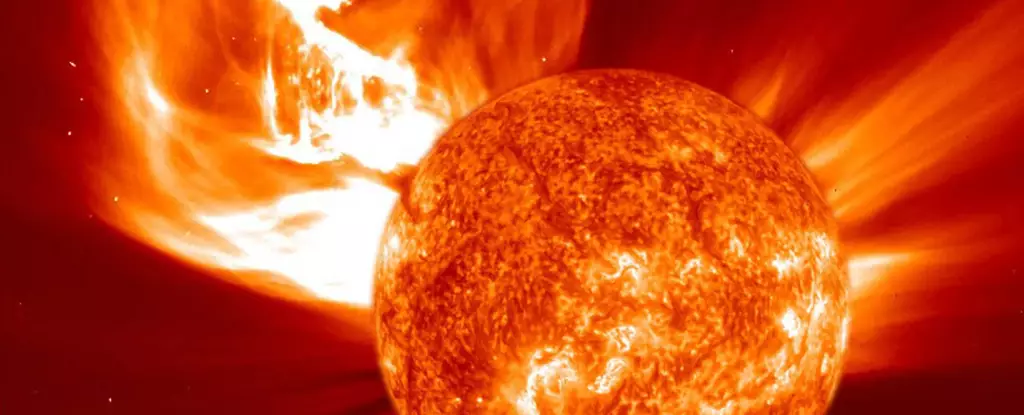Recently, three cube satellites from Curtin University’s Binar Space Program met an untimely end as they burned up upon re-entering Earth’s atmosphere. The Binar satellites, designated as Binar-2, Binar-3, and Binar-4, were designed to stay in orbit for approximately six months, but their lifespan was unexpectedly cut short to only two months. This unfortunate event not only highlights the unpredictable nature of satellite missions but also exposes the vulnerabilities of low Earth orbit (LEO) operations to elevated solar activity.
Binar, which translates to “fireball” in the Noongar language spoken by the Indigenous peoples of Perth, symbolizes the fate that awaited these tiny satellites. In low Earth orbit, which is defined as being within 2,000 kilometers of the Earth’s surface, satellites inevitably encounter orbital decay, a gradual descent toward the planet. However, the Binar satellites descended much sooner than anticipated due to an increase in atmospheric drag caused by heightened solar phenomena.
Solar activity encompasses a variety of phenomena, including sunspots, solar flares, and solar wind—a stream of charged particles emitted by the Sun. The Sun operates on an approximately 11-year cycle, during which its magnetic field experiences a complete flip, impacting solar activity levels. Currently, we find ourselves in solar cycle 25, where activity reaches its peak at the cycle’s midpoint. Unfortunately, while we can anticipate the general peak of solar activity, predicting specific events remains a challenge due to the complex dynamics involved. Recent months have seen solar activity levels surpass predictions by more than 50%, which has raised alarm among satellite operators.
The implications of enhanced solar activity are far-reaching and impactful. The increased presence of solar flares can lead to enhanced radiation levels and disruptions in satellite electrical systems. Moreover, a surge in solar wind infuses the upper atmosphere with energy, causing it to expand. As a consequence, satellites in LEO are susceptible to increased atmospheric drag, which can compromise their orbital stability significantly.
CubeSats, like those from the Binar program, are typically low-cost and lightweight, comprising small, standardized units. However, this simplicity comes with limitations; many CubeSats lack the propulsion systems needed to actively adjust their orbits in response to detrimental space weather. As a result, their operators have little recourse when faced with high levels of solar activity. In the case of the Binar satellites, the significantly increased drag led to an accelerated orbital decay, compelling them to re-enter the atmosphere before they could reach their scientifically productive lifespan.
The Binar Space Program commenced operations with Binar-1 in September 2021, during a phase of relatively low solar activity. This satellite completed a full year in orbit without incident, fostering hopes for the subsequent missions. Expectations were set for Binar-2, 3, and 4 to benefit from advanced solar arrays and additional surface area. However, these hopes were dashed when the unpredicted spike in solar activity resulted in rapid degradation.
The premature end of the Binar missions emphasizes a crucial need for improved space weather forecasting. As more satellites—including commercial ventures—flood LEO, the demand for precise forecasting grows exponentially. Unexpected disruptions can incur significant costs, undermining investments made in these missions.
This dire situation serves as a cautionary tale for the science and technology sectors engaged in satellite development and deployment. Future missions must factor in the influence of solar cycles and other space weather phenomena right from the planning stages. The return to a solar minimum, expected around 2030, will likely provide some respite, but it is essential for researchers and operators to develop adaptive strategies that counteract solar risks.
Despite the misfortune encountered by Binar-2, 3, and 4, enthusiasm for the Binar Space Program remains unscathed. Plans are already underway for upcoming missions designed to navigate through clouds of solar flares and protect against the unpredictable swings in solar activity. It is anticipated that future launches will embrace more robust technologies and strategies, aiming for operational longevity in a challenging environment.
While the current challenges are formidable, the scientific community’s response will ultimately define the future of satellite operations in a high-activity solar environment. The Binar Space Program’s experience has underscored the interplay between space weather and satellite dynamics, drawing attention to a fundamental aspect of modern aerospace exploration. As researchers learn from these setbacks, the hope is to forge a path toward more sustainable and successful satellite missions in the wake of solar storms.


Leave a Reply